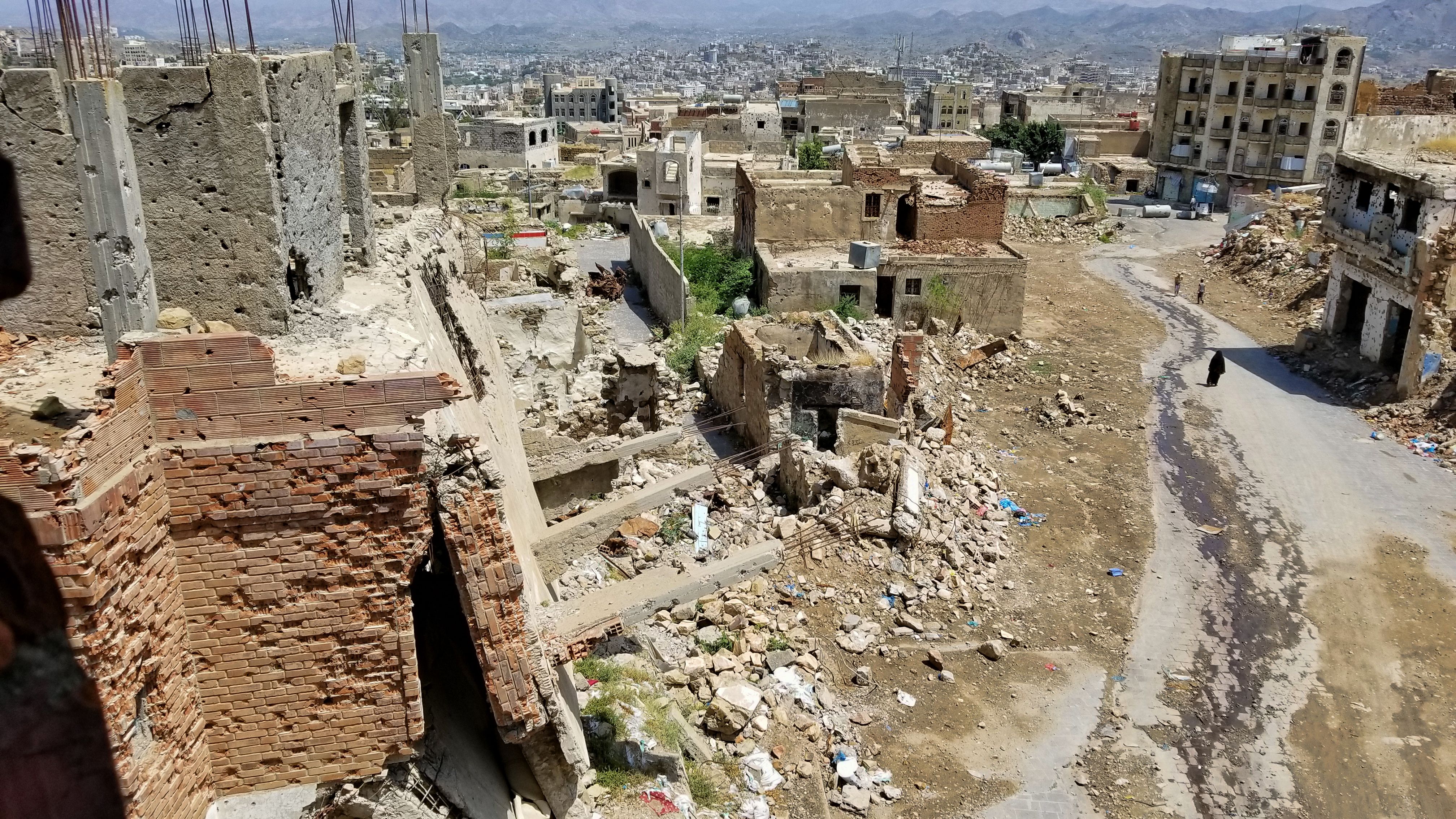Faced with worsening food crisis, humanitarians embrace new approaches to delivering aid
Food insecurity is rising fast around the globe, driven by a combination of factors from the war in Ukraine to climate change. Organizations working in some of the most affected communities are building agility through collaboration.
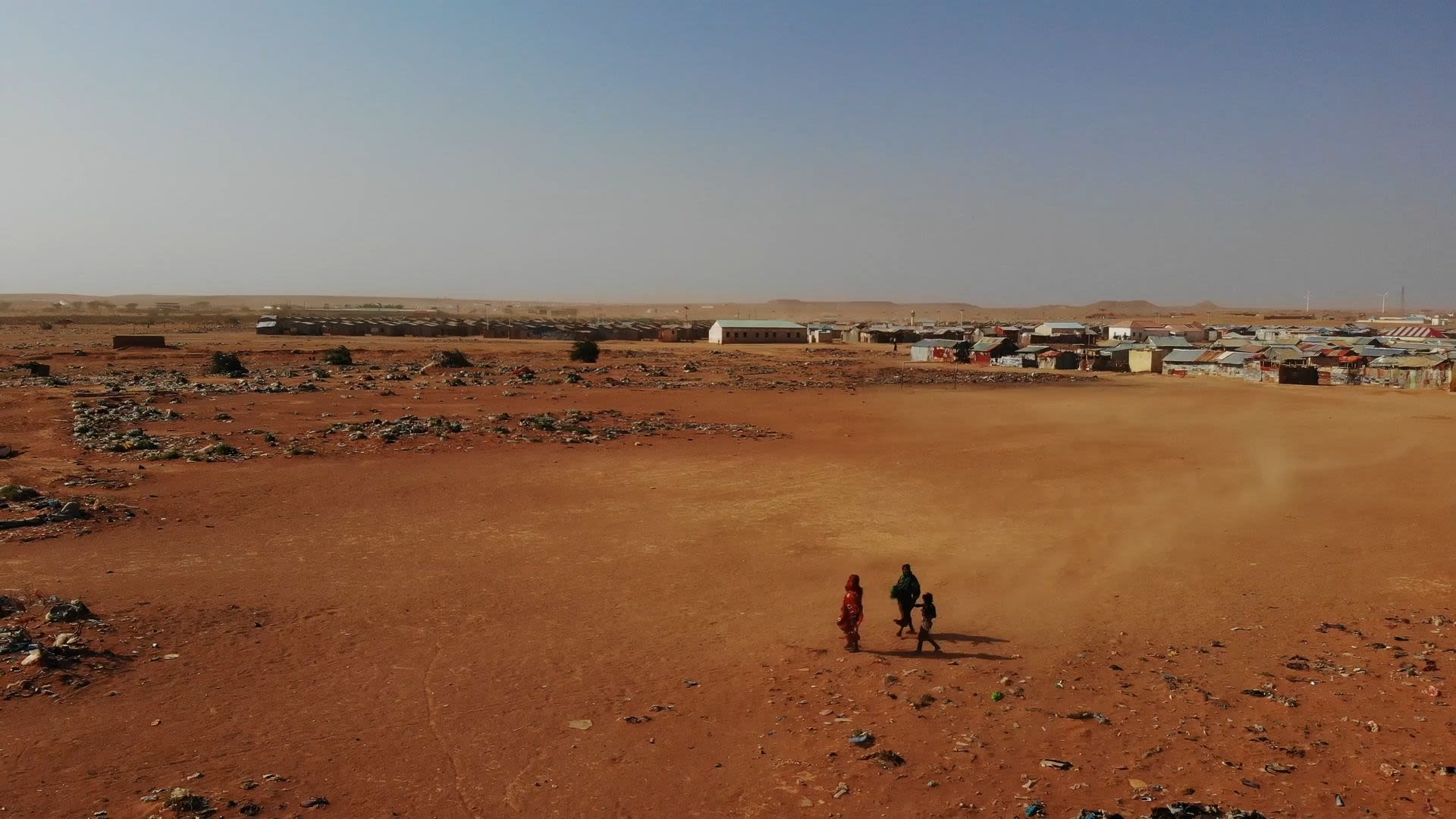
SPONSORED BY
Nearly 258 million people in 58 countries were acutely food insecure and in need of urgent assistance in 2022, according to the Global Report on Food Crises. This is an increase of 65 million people since 2021 — and the situation is expected to worsen further still.
The war in Ukraine has disrupted global food supplies, with poorer countries disproportionately affected. This is further impacting food systems that were already hit by the COVID-19 pandemic and climate change. The consequences on affected populations range from malnutrition to economic insecurity, gender-based violence, and population displacement.
“The food crisis is a combination of different crises coming together,” said Ina Hogendoorn, crisis coordinator at the Dutch Relief Alliance, a coalition of 14 organizations providing coordinated humanitarian responses around the world in partnership with the Dutch Ministry of Foreign Affairs. “And now it really has a global impact.”
With no end in sight for the current drivers of acute food insecurity, humanitarian organizations must reckon with the limitations of existing approaches to delivering aid, placing a greater focus on helping communities build resilience and prepare for a future of recurring shocks.

“If we don't find the funding to respond to these humanitarian needs, we’ll see much more mass migration. … People really want to stay where they are. … But if it's impossible, they'll get on the move.”
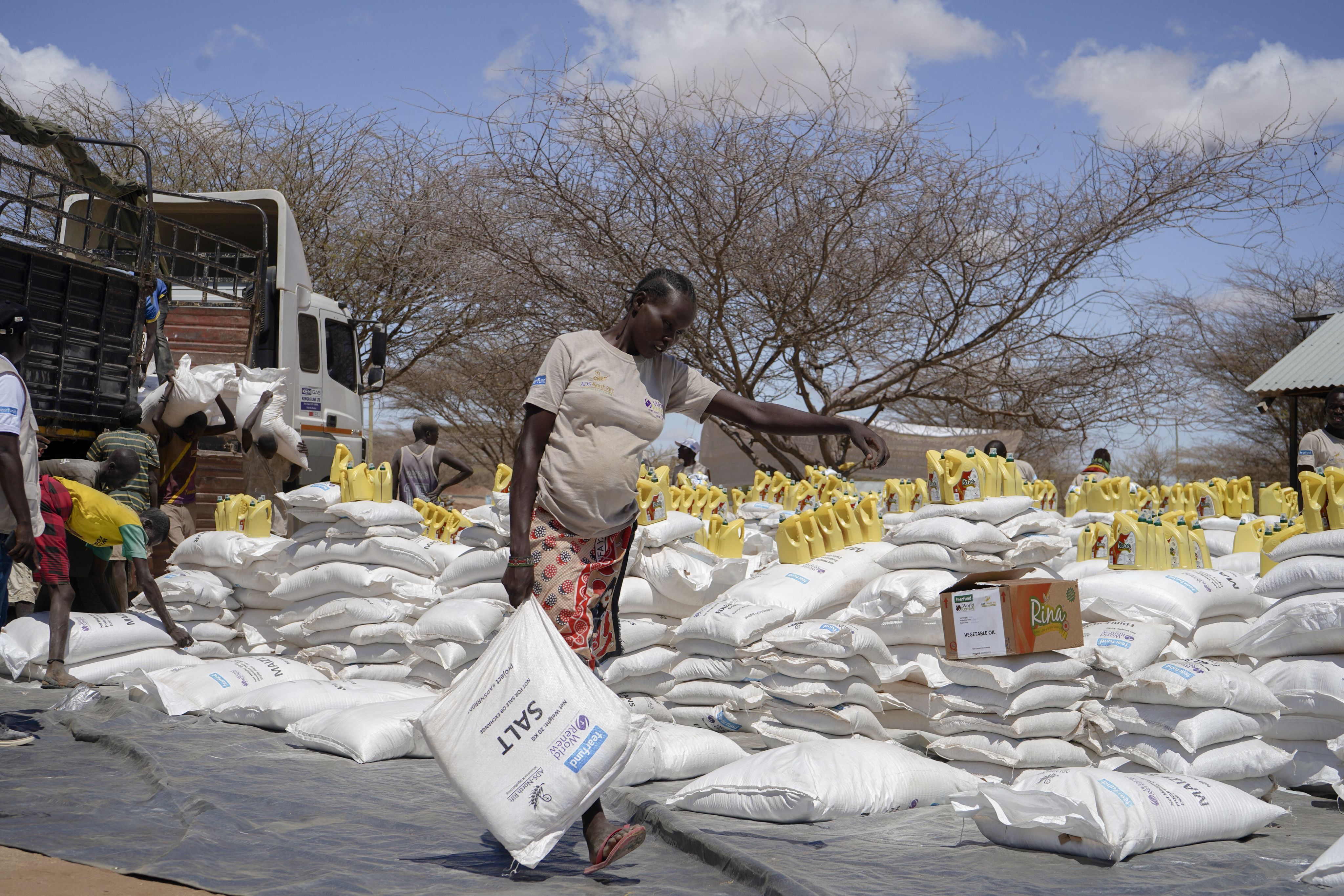
Increasing funding needs
Insufficient funding for appeals remains the biggest hurdle to delivering aid, according to the humanitarian experts Devex spoke with. A report by Action Against Hunger revealed that only 7.6% of appeals for 13 countries experiencing crisis levels of hunger were funded in 2021. What’s more, the funding was inadequately distributed among countries, with those most in need actually receiving less funding on average.
While global humanitarian funding for United Nations appeals has increased by 223% between 2012 and 2022, humanitarian needs have risen by 500% over the same time period, leading to an increasingly large funding gap.
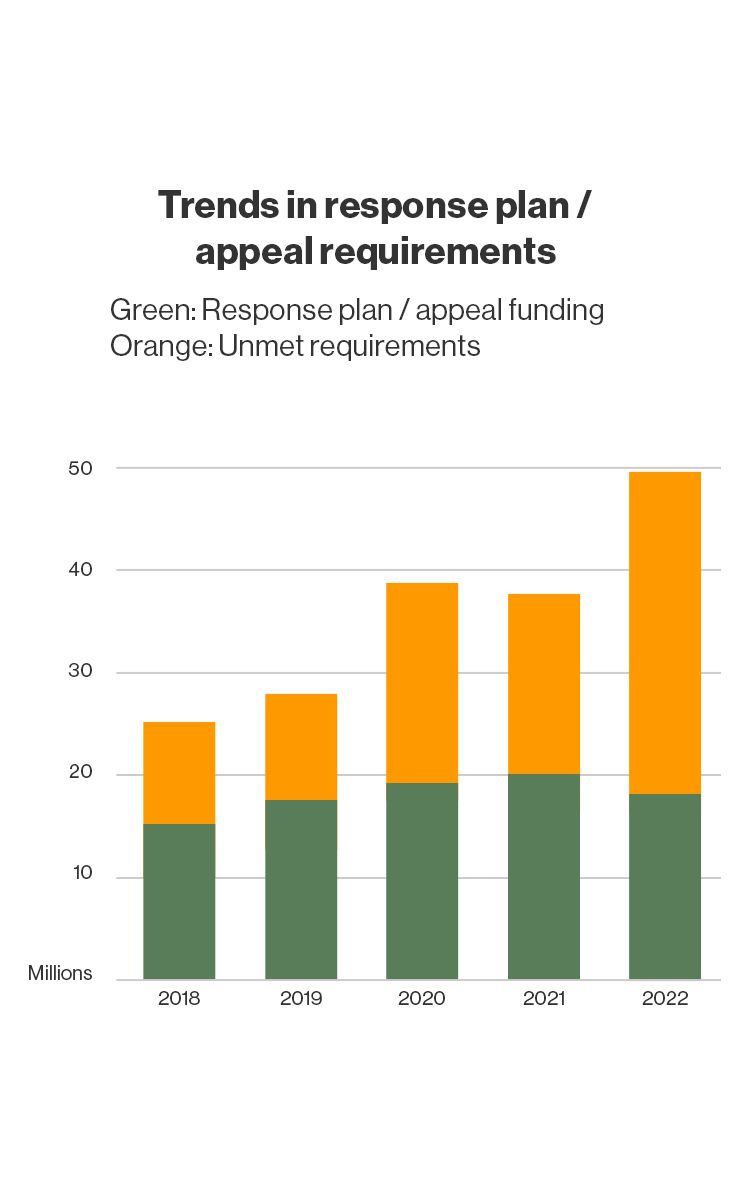
Source: The Hunger Funding Gap
“Although the total funding for humanitarian work has increased, the amount per person in need has declined,” Hogendoorn said.
Without enough funding available to cover all appeals, international donors have divested from existing crises and shifted priorities to more recent emergencies, leaving humanitarian organizations operating in preexisting crises with dwindling resources to work with.
Odai Alhamli, program manager at the Sustainable Development Foundation, a local organization providing development and humanitarian assistance in Yemen, said international funding for the humanitarian crisis in Yemen had decreased by roughly 40% in 2023 due to reallocation of funding by international donors. This, added to increased procurement costs due to currency deflation and price increases, is making it increasingly difficult for organizations like SDF to deliver assistance.
Odai Alhamli explains how the Sustainable Development Foundation is adapting to funding shortages for its work in Yemen.
“The ongoing conflict in Yemen has led to the displacement of millions of people, making it difficult for SDF to access and respond to the huge number of displaced people and vulnerable people in the community,” Alhamli explained. “It's also much more difficult to deliver aid effectively, especially in light of the current decrease in funding by multiple donors due to the Ukraine crisis and other crises happening around the world.”

Source: The Hunger Funding Gap
Source: The Hunger Funding Gap
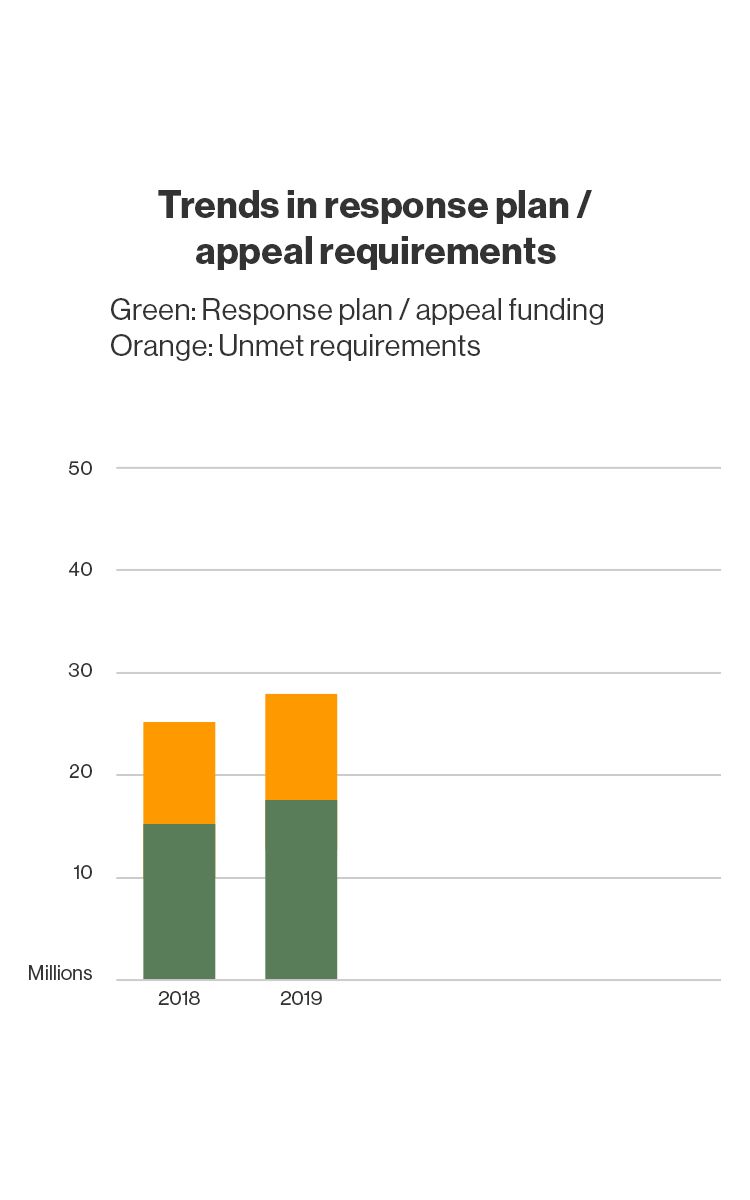
Source: The Hunger Funding Gap
Source: The Hunger Funding Gap
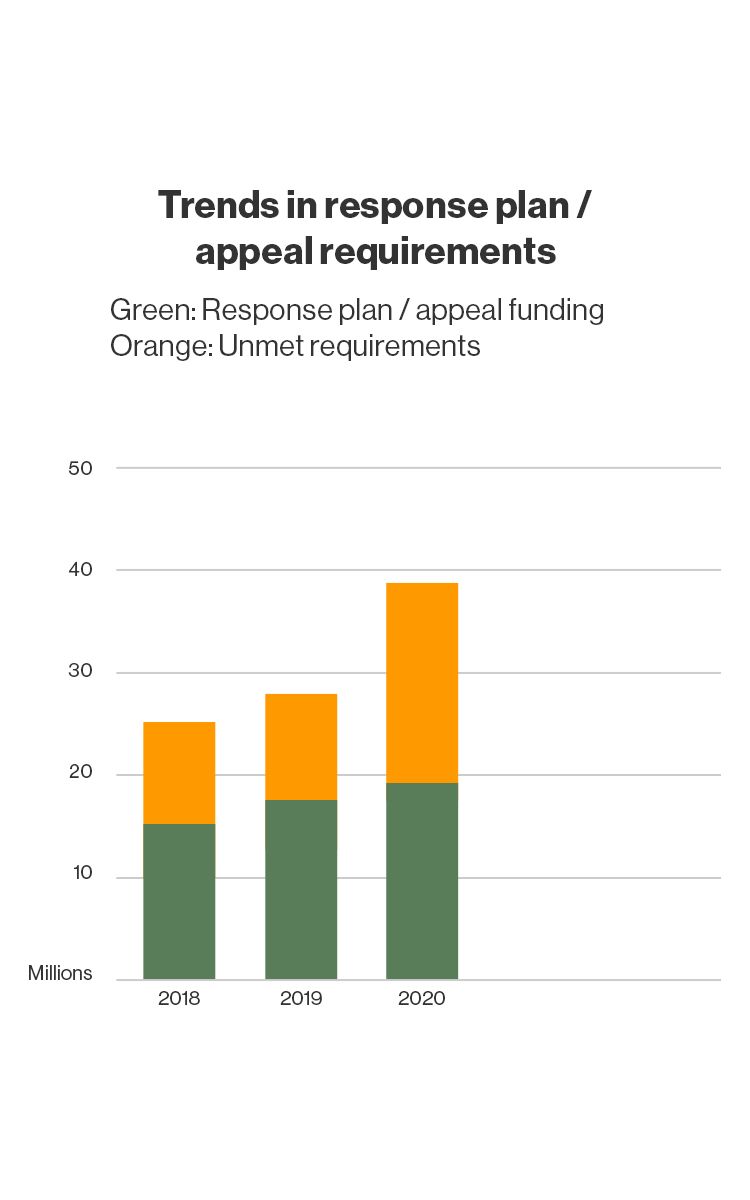
Source: The Hunger Funding Gap
Source: The Hunger Funding Gap

Source: The Hunger Funding Gap
Source: The Hunger Funding Gap

Source: The Hunger Funding Gap
Source: The Hunger Funding Gap



A community health volunteer delivers health awareness messages in Qatab’ah city, Al-Dhale’e governorate, Yemen. Photo: Bassam Saleh / CARE Yemen
A community health volunteer delivers health awareness messages in Qatab’ah city, Al-Dhale’e governorate, Yemen. Photo: Bassam Saleh / CARE Yemen

A main pipeline that provides water to Qatab’ah city, in Al-Dhale’e governorate, Yemen. Photo: Bassam Saleh / CARE Yemen
A main pipeline that provides water to Qatab’ah city, in Al-Dhale’e governorate, Yemen. Photo: Bassam Saleh / CARE Yemen
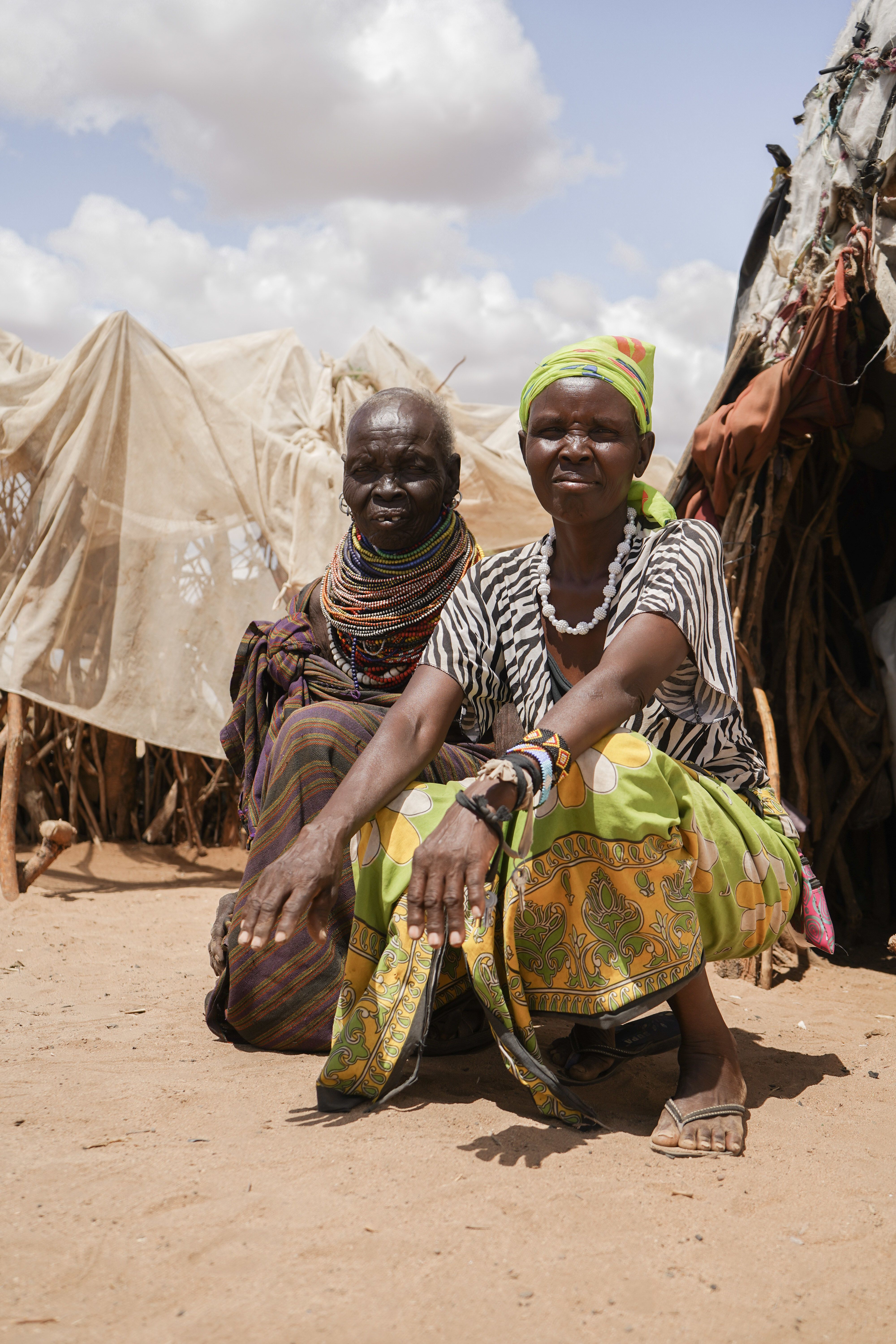
Etete Moru and her daughter Priscilla Lokope outside their home in Turkana County, Kenya. Photo: Christel Stelpstra / Tearfund
Etete Moru and her daughter Priscilla Lokope outside their home in Turkana County, Kenya. Photo: Christel Stelpstra / Tearfund
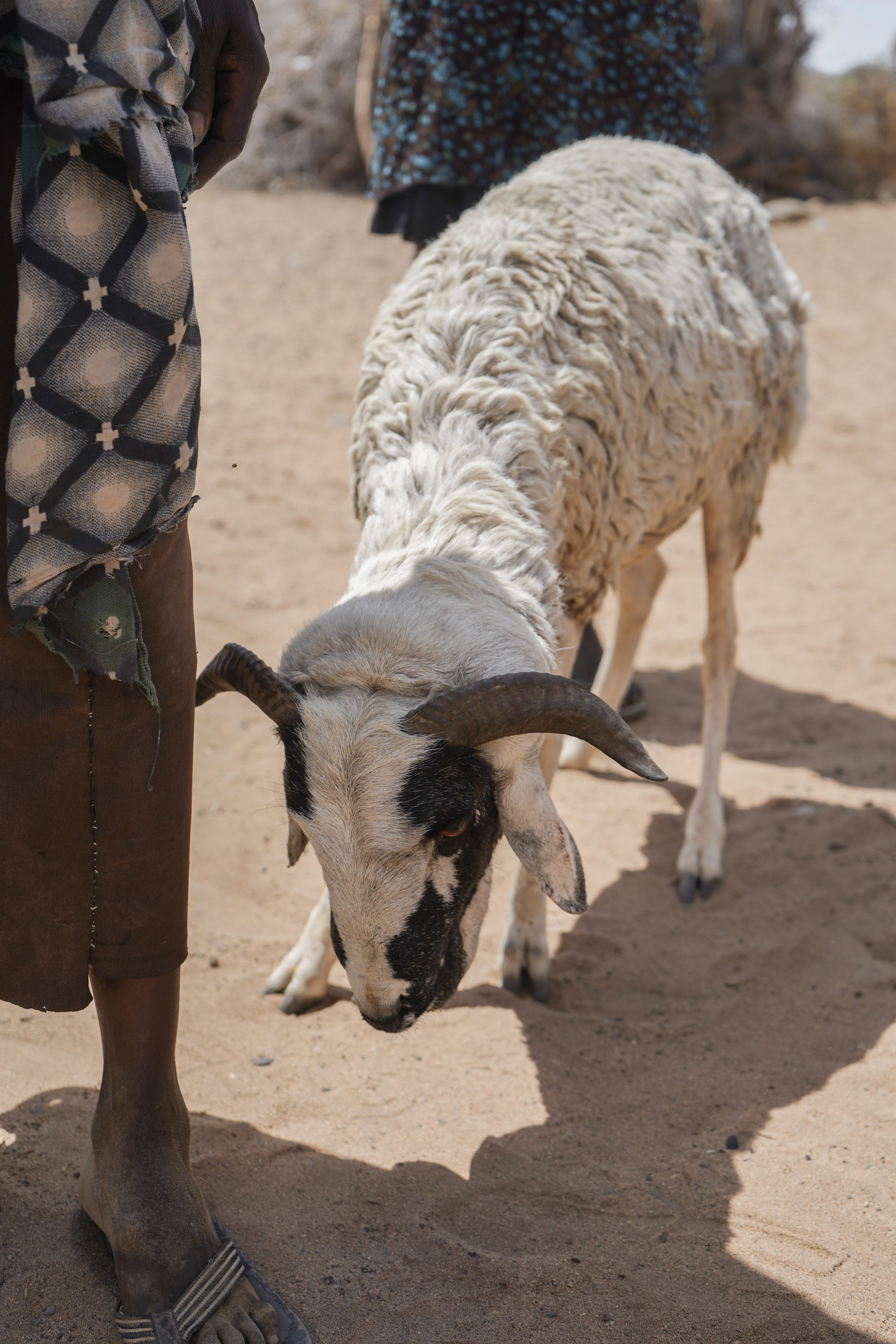
One of Etete Moru's five goats. In the space of just a few months, Etete lost almost all of her livestock. Photo: Christel Stelpstra / Tearfund
One of Etete Moru's five goats. In the space of just a few months, Etete lost almost all of her livestock. Photo: Christel Stelpstra / Tearfund
Building agility through collaboration
In response to this changing context, humanitarian organizations are pushing for greater effectiveness of aid programs. Since its inception in 2015, the Dutch Relief Alliance has used a joint response mechanism, through which its collaborating organizations and local partners work together to design and deliver context-specific programs. Over the years, local and national organizations have increasingly taken the lead on program design and implementation, Hogendoorn explained.

Etete Moru and her daughter Priscilla Lokope outside their home in Turkana County, Kenya. Photo: Christel Stelpstra / Tearfund
The joint response allows collaborating organizations to allocate funds more swiftly and to tap into each organization’s unique expertise, allowing them to respond to crises with more agility and complementarity. For example, the Somalia joint response piloted a crisis modifier, a funding mechanism through which local organizations can identify and respond to needs as they arise. This allowed local partners to work more closely with communities while decreasing their dependency on international funders.
In Kenya, the joint response was implemented between June and December 2022 to address the ongoing drought in the northern part of the country. Partners provided programs spanning water and sanitation, gender-based violence, child protection, food distribution, and cash transfers.

One of Etete Moru's five goats. In the space of just a few months, Etete lost almost all of her livestock. Photo: Christel Stelpstra / Tearfund
The joint response matched an ongoing effort to strengthen coordination between all groups working on emergency responses in the country, said Rose Muthama, field coordinator of the Kenya Joint Response.
“Local organizations [and] donor organizations have come together to work with the governments of the countries, and the private sector is also coming in to support the humanitarian work,” notably through skills-building, she explained.
Organizations have been working in partnership with Kenya’s Drought Management Authority, which coordinates the government’s response to drought emergencies, and formed thematic steering groups to build alignment across different types of activities such as water and sanitation or food aid, Muthama explained. This facilitates knowledge transfer between organizations and limits the duplication of efforts, she added.
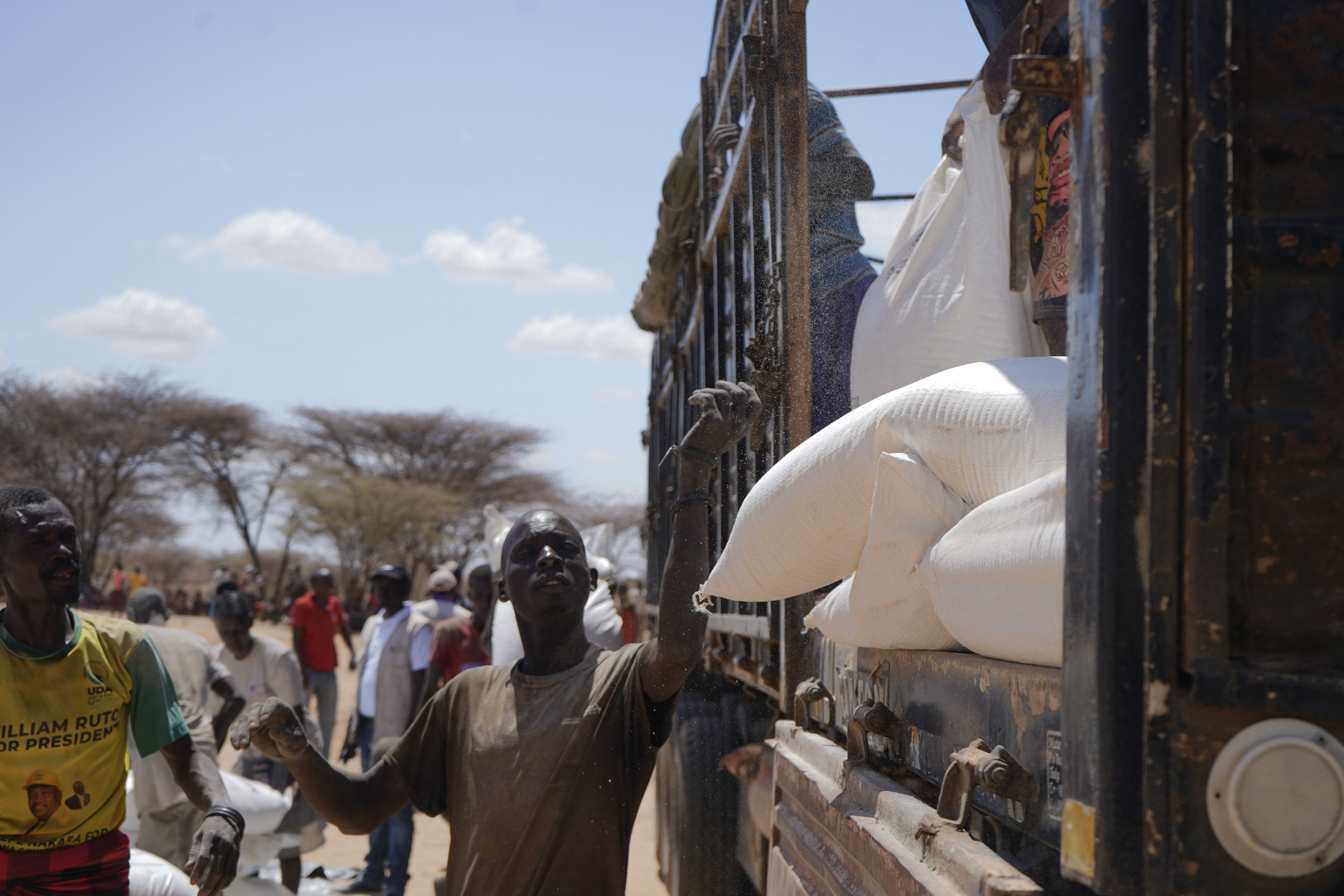
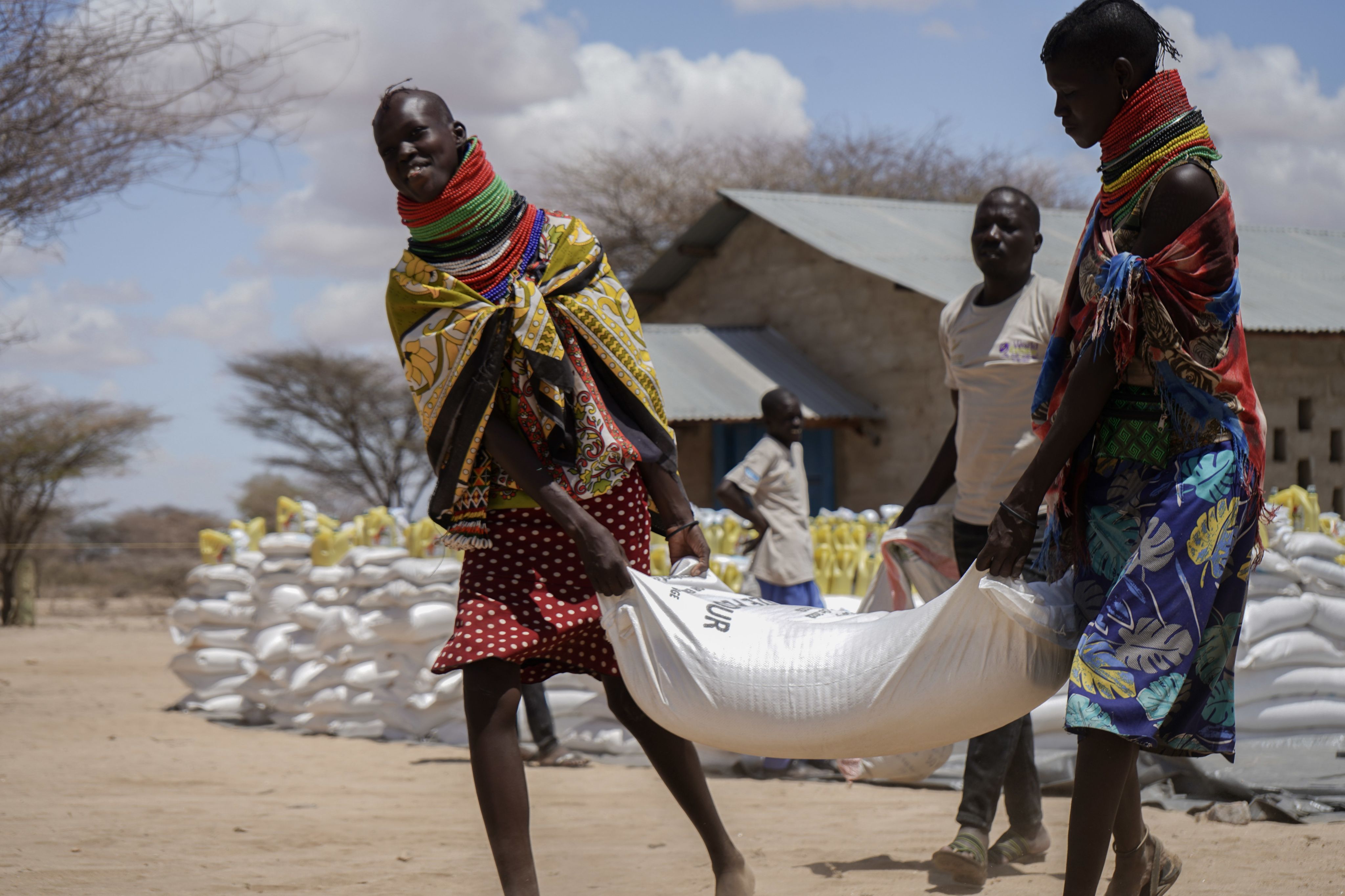




A distribution of essential items at Lochwaa-Angikamatak in Turkana County, Kenya. Photo: Christel Stelpstra / Tearfund
A distribution of essential items at Lochwaa-Angikamatak in Turkana County, Kenya. Photo: Christel Stelpstra / Tearfund
Funding community resilience
Over the years, organizations have recognized that delivering food aid is not enough to address the needs of affected communities. Increasingly, organizations working around drought relief and food security in Kenya have included livelihood activities in their response to help communities bounce back from crisis, Muthama explained.
Until now, the humanitarian response to the drought has largely focused on delivering food aid, Muthama said. "But now there’s a drive towards [building resilience] in the projects,” she explained.
The Kenya joint response included activities such as rehabilitation of the water infrastructure, and delivery of seeds, tools and animal feed to smallholder farmers. It also provided cash transfers that recipients could use to buy food or other household expenses.
“We found that … in most of the areas, [people] were able to make their own decisions on what to buy, and how to buy it. The only tricky part of that modality for us was around the availability of the commodities,” Muthama said. The joint response is now evaluating which of the cash transfer or food aid programs was most impactful in this context, she explained.
Rose Muthama of the Kenya Joint Response discusses the challenges involved in bridging the humanitarian-development nexus.
But funding for the joint response has since come to a close, even though the situation remains severe. What’s more, current international funding mechanisms tend to separate emergency relief from development programs, preventing organizations from using the funds to help communities rebuild after crises, Muthama explained. The lack of funding for programs that fall under the humanitarian-development nexus — the overlap between emergency relief and long-term development — makes it more difficult for communities to become self-sufficient again and reduce their dependence on foreign aid.
“After a crisis, everybody moves on to something else,” she said. “I think the next challenge for humanitarian organizations will be what they're calling the nexus: How do we bridge it? How do we move from the crisis response to building resilience to long-term development, which most of the funding organizations are not prepared [for]?”
In order to facilitate the transition from emergency response to development assistance, international donors should consider providing funding over longer periods of time, as well as allocating a portion of emergency funding to resilience-building activities, Muthama said.
Facilitating true partnerships
SDF has been implementing the local joint response program with Dutch Relief Alliance partners in Yemen since the beginning of 2021, providing water and sanitation, cash, and health services. Together with ZOA, a partner organization of the alliance, SDF has implemented a group cash transfer program, aiming to enable communities to decide on and implement their own emergency projects.
In this case, SDF noticed that recipients lacked the knowledge to make informed decisions on how to spend the funds, Alhamli explained. So the organization decided to match the transfers with consulting and training so that groups could learn how to map their needs, identify the right solutions and implement them.
“The success story here is that all of them have used these grants to support their local communities, support their local education system, their health system and agricultural system,” Alhamli said.
Local organizations in Yemen should have more autonomy to design and implement programs that are best suited to the needs of communities, but they have historically been shielded from decision making in humanitarian response, he explained.
“International NGOs treat local partners not as an equal partner and a collaborator, but rather as an implementer or a contractor, where they would just shift the fund and then they would expect from them to do whatever is in the agreement,” he said.
He called for a more collaborative approach to humanitarian response, where local and international organizations can work more equally.
Improving collaboration between humanitarian groups, ensuring locally led design, and building the resilience of affected communities will become all too essential in the coming years, as the need for humanitarian assistance is likely to increase. With climate change-related extreme weather events on the rise, more communities are expected to face the consequences of food insecurity, with impacts being felt globally, Hogendoorn warned.
“We see that it’s important to continue to strengthen the humanitarian system and improve and try new ways,” she said. “If we don't find the funding to respond to these humanitarian needs, we’ll see much more mass migration. People really want to stay where they are, that's their home, that is their land. But if it's impossible, they'll get on the move.”
